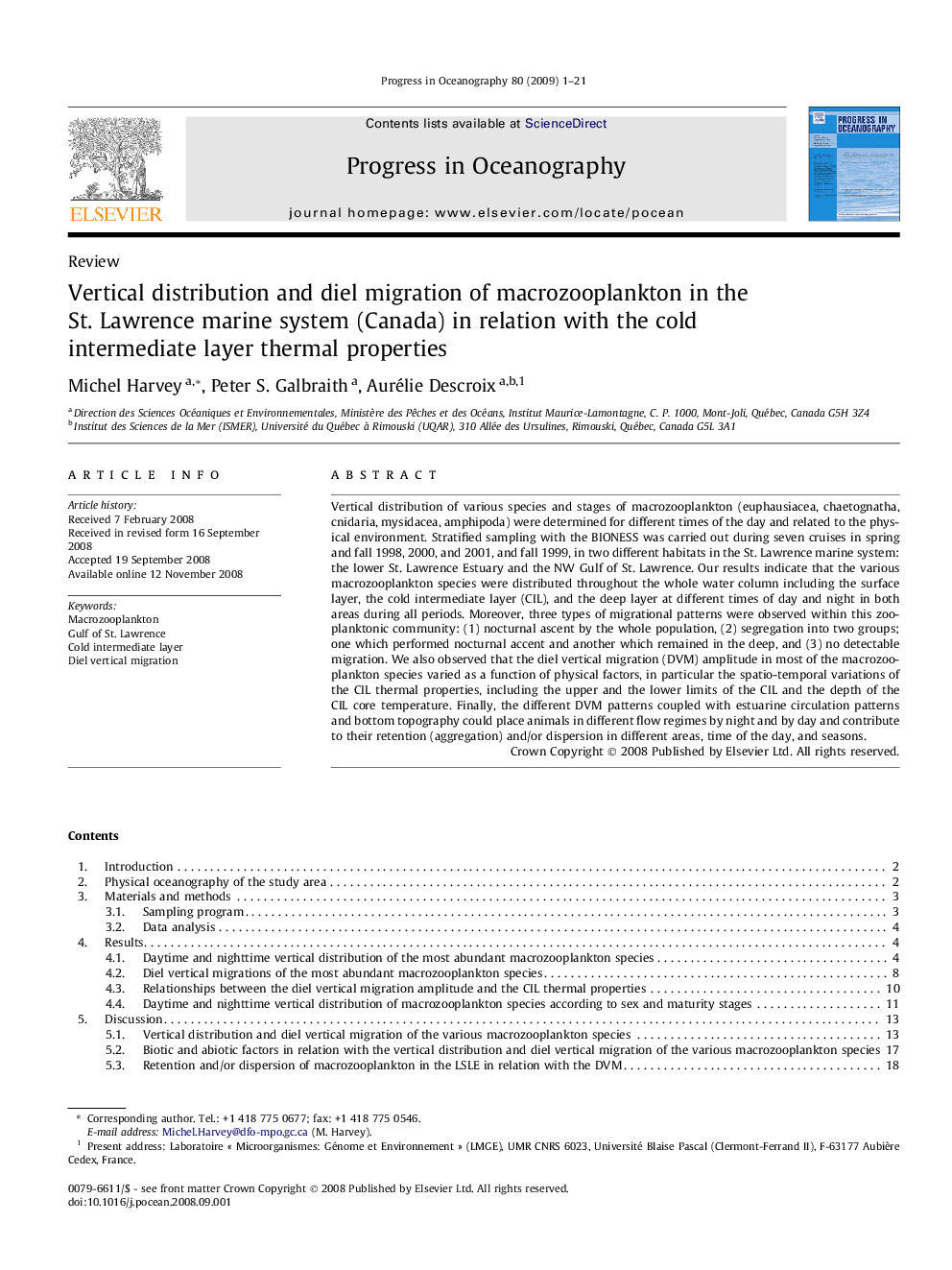| Article ID | Journal | Published Year | Pages | File Type |
|---|---|---|---|---|
| 4553660 | Progress in Oceanography | 2009 | 21 Pages |
Vertical distribution of various species and stages of macrozooplankton (euphausiacea, chaetognatha, cnidaria, mysidacea, amphipoda) were determined for different times of the day and related to the physical environment. Stratified sampling with the BIONESS was carried out during seven cruises in spring and fall 1998, 2000, and 2001, and fall 1999, in two different habitats in the St. Lawrence marine system: the lower St. Lawrence Estuary and the NW Gulf of St. Lawrence. Our results indicate that the various macrozooplankton species were distributed throughout the whole water column including the surface layer, the cold intermediate layer (CIL), and the deep layer at different times of day and night in both areas during all periods. Moreover, three types of migrational patterns were observed within this zooplanktonic community: (1) nocturnal ascent by the whole population, (2) segregation into two groups; one which performed nocturnal accent and another which remained in the deep, and (3) no detectable migration. We also observed that the diel vertical migration (DVM) amplitude in most of the macrozooplankton species varied as a function of physical factors, in particular the spatio-temporal variations of the CIL thermal properties, including the upper and the lower limits of the CIL and the depth of the CIL core temperature. Finally, the different DVM patterns coupled with estuarine circulation patterns and bottom topography could place animals in different flow regimes by night and by day and contribute to their retention (aggregation) and/or dispersion in different areas, time of the day, and seasons.
